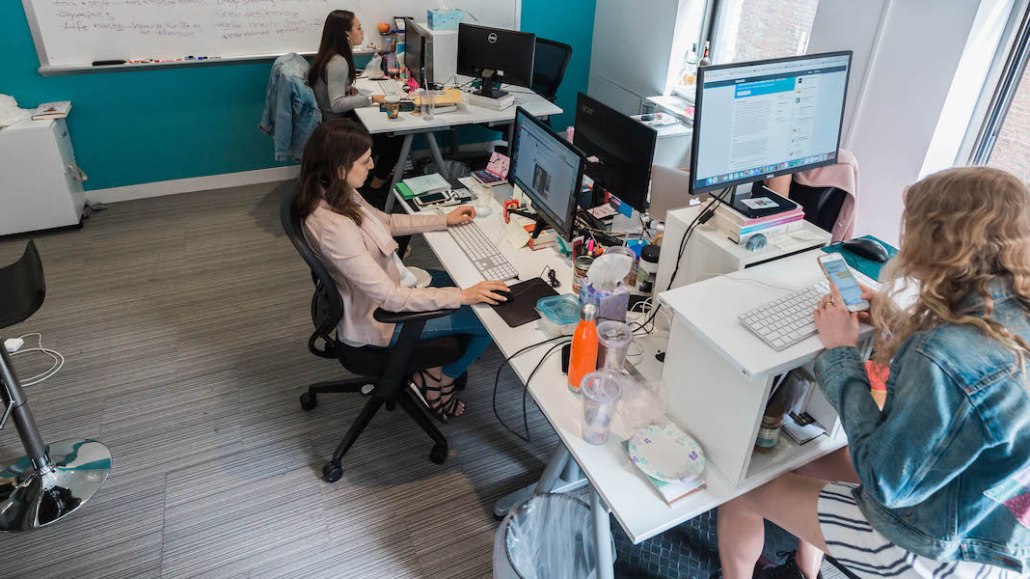Save 50% on a 3-month Digiday+ membership. Ends Dec 5.
How Business Insider’s distributed brand Insider is diversifying from Facebook

Insider, the lifestyle spinoff of Business Insider launched as a distributed brand 19 months ago, is now figuring out how to turn a distributed brand into a successful owned and operated property.
Last May, Insider launched its own website at thisisinsider.com, eight months after debuting on social media. Unlike videos hosted on platforms, Insider found that posts on its website work best if they have a service component. While users might gravitate toward any shiny object they see in their Facebook feed, if they’re going to stick around on the publisher’s site, Insider has to frame content “around what is useful for that person,” said Nicholas Carlson, Insider’s editor-in-chief.
Take food. A video featuring one food dish at a restaurant will perform well for Insider on Facebook. But on the site, these videos “became like trivia rather than useful information,” Carlson said. So on the site, Insider’s posts are now more likely to show someone how to make a food dish themselves.
Carlson also noticed that videos that contain a lot of subjects, like those showcasing 30 luxurious vacations spots, did well on social platforms but fell flat on the site. Insider now repurposes these videos into photo essays with brief descriptions. “Users want to scroll at their own pace,” Carlson said.
Since the launch, Insider’s site has grown across several metrics. ComScore data shows that Insider’s website had 3.9 million unique visitors in February, which is up from June (the first month comScore had available data for), when the site registered 364,000 unique visitors.
Insider’s site team has expanded from 10 to 15 employees, and Carlson said its headcount could grow to 30 by the end of the year as the site looks at expanding into new verticals around style, beauty and tech. The overall Insider team is now at 50 people, and Carlson expects it, too, could double in size this year.
The growing team will have to keep a close eye on Facebook’s changing priorities. In January, Facebook changed its algorithm to give longer videos a boost. Although none of the pages saw their total followers drop, Tubular Labs data shows that across several of the largest Insider Facebook pages — Insider, Insider Food, Insider Art and Insider Travel — the average monthly video views declined from 235 million views in January to 151 million in March on average. The more niche Facebook pages — like Insider Cheese, Insider Science and Insider Pop Culture — haven’t seen a decline as their views shot up from under 100,000 in January to about 2.5 million in March on average. A BI spokesperson said that the decline in total views is attributable to Insider “experimenting with fewer and longer videos” on Facebook.
Ad position: web_incontent_pos1
Insider’s website relies primarily on programmatic revenue, which accounts for more than 80 percent of the website’s revenue most months. The larger Insider brand still makes most of its money through Facebook’s suggested video program and by getting advertisers to pay for their own videos on platforms. Insider declined to share financial figures or if the website was profitable yet.
Although Insider now has a property that exists outside of the platforms, it is still highly dependent on them. About 75 percent of the website’s traffic comes from social and almost all of it is driven by Facebook, according to SimilarWeb. Carlson was unfazed when asked if the publication he runs is too dependent platforms with their own motivations.
“You have the build the product that the audience wants,” he said. “And I think they want the content where they already are.”
This article has been updated to reflect that Insider is posting fewer videos on Facebook.
Photo via Insider
More in Media

Digiday+ Research Subscription Index 2025: Subscription strategies from Bloomberg, The New York Times, Vox and others
Digiday’s third annual Subscription Index examines and measures publishers’ subscription strategies to identify common approaches and key tactics among Bloomberg, The New York Times, Vox and others.

From lawsuits to lobbying: How publishers are fighting AI
We may be closing out 2025, but publishers aren’t retreating from the battle of AI search — some are escalating it, and they expect the fight to stretch deep into 2026.

Media Briefing: Publishers turn to vertical video to compete with creators and grow ad revenue in 2026
Publishers add vertical video feeds to their sites to boost engagement, attract video ad spend and compete with news creators.
Ad position: web_bfu



